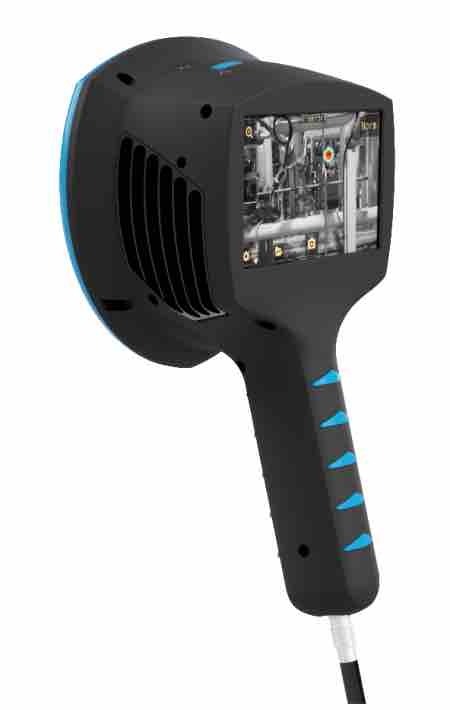Atlas Copco has enhanced its longstanding compressed air leak detection service by upgrading to new, high-performance acoustic imaging cameras.
Until March 31st 2021, Atlas Copco is backing this service with a Winter Guarantee, which refunds the survey cost if it does not save the customer money.
All compressed air systems have leaks, with causes including corrosion, poor pipe connections and bad seals. While leakage rates are 25% on average, they can reach as much as 80% in some plants. This has significant cost implications as a single 3mm diameter hole in a compressed air pipe can waste £1000 or more annually in electricity bills.
Conversely, air leak detection surveys can facilitate significant energy bill reductions; one global manufacturer of connectors and sensors saved £48,000, while one of the UK’s largest food companies saved £45,000.

Atlas Copco’s air leak detection survey operates by building a profile of the energy wasted through air leakage within a compressed air system.
By finding, logging, quantifying, and costing air leaks, the survey allows plant managers and energy specialists to prioritise the remedial work required to reduce their energy costs.
The best, and most popular survey approach is to use ultrasonic leak detection equipment. It operates without interrupting plant production, reaches system areas that are hard to access, and locates all air leaks. Atlas Copco is now achieving this using acoustic imaging camera which can help detect leaks in compressed air systems up to 10 times faster than traditional methods.
The camera takes measurements with 124 microphones to form a very precise acoustic image. The camera’s bandwidth extends to ultrasonic frequencies, allowing it to locate sound sources precisely, even in a noisy industrial environment.

The acoustic image is superimposed in real-time onto a digital camera picture as a heat map to provide real-time sound visualisation of the leak sources. The heatmap shows each sound source with a single colour governed by the estimated leak flow.
Atlas Copco then provides the customer with easily-understood, actionable information including each leak’s exact source and size in litres/minute. The leaks are marked on-site with weatherproof tags carrying this information, with an ID number and date. A customer report is then provided that lists the leaks and shows their site locations, leak photographs, tag IDs, leak severity in litres/minute, energy costs, positions, and costs to repair.
All surveys are performed by experienced, fully-qualified Atlas Copco engineers, who are equipped with PPE appropriate for Covid safety.
 Engineer News Network The ultimate online news and information resource for today’s engineer
Engineer News Network The ultimate online news and information resource for today’s engineer





